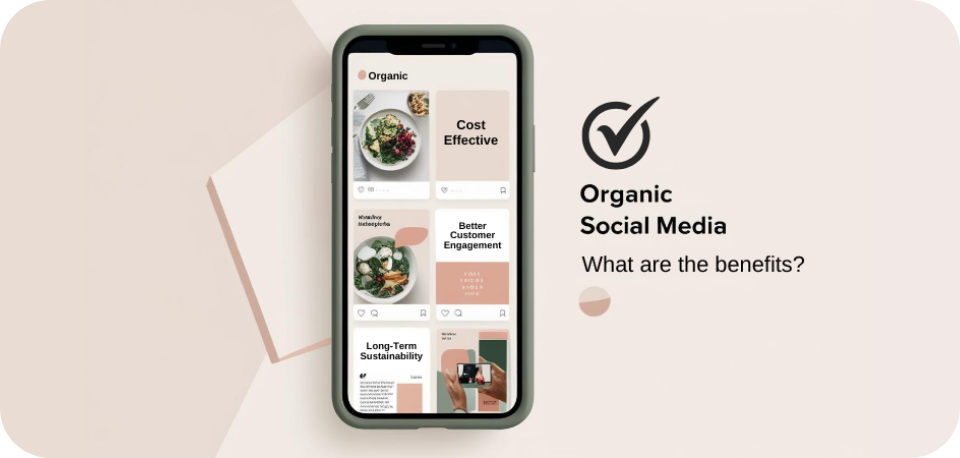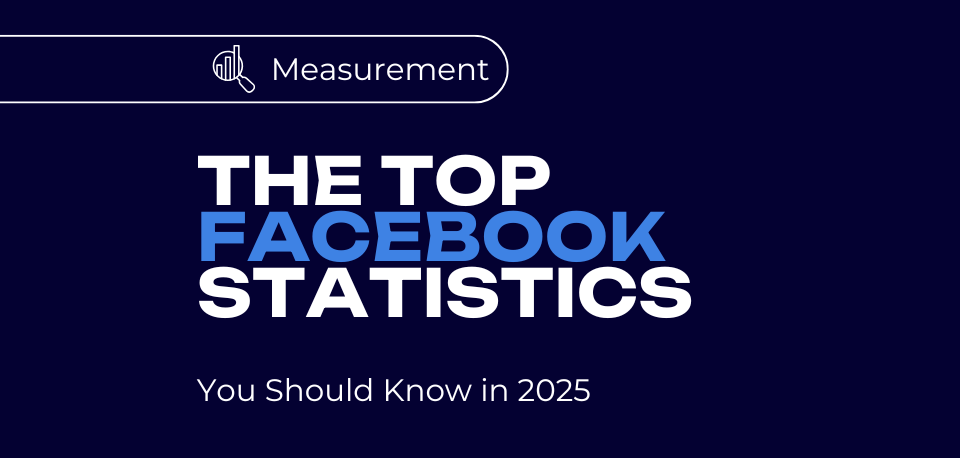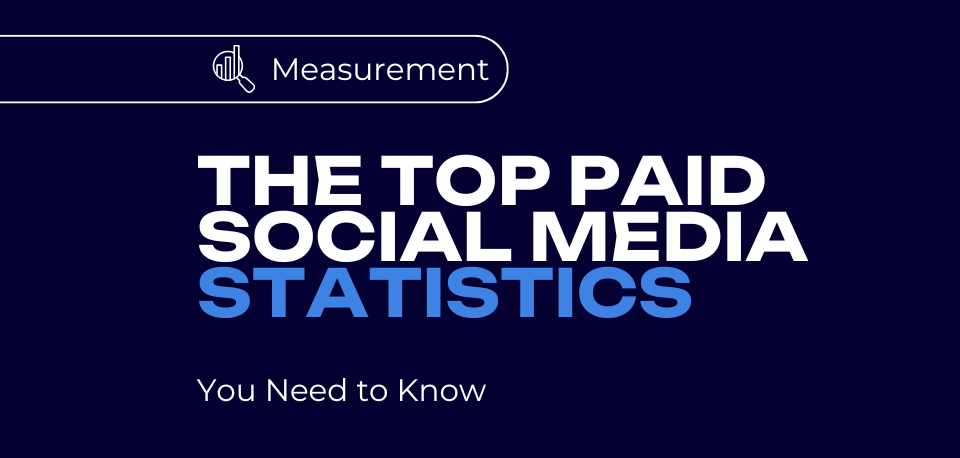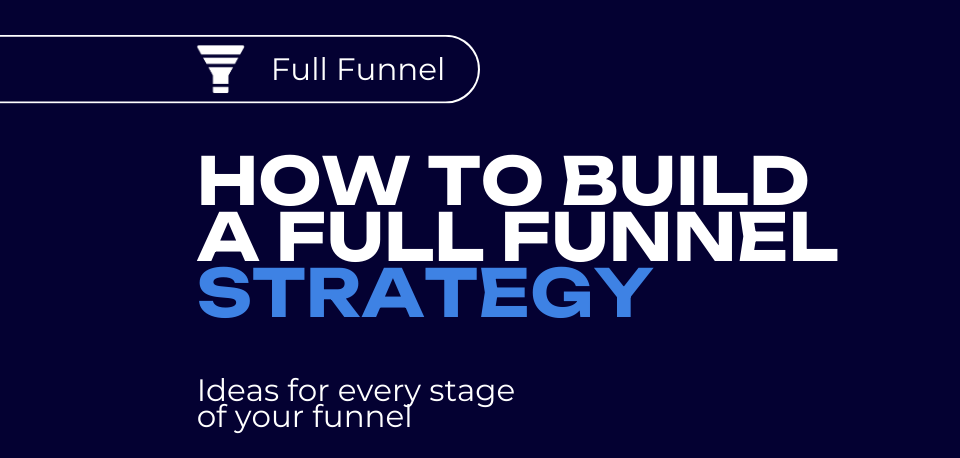Organic Social vs. Paid Social: Which Strategy Is Right for You?
What’s the difference between organic and paid social media, and how do you know which one will help you boost sales and connect with your audience more effectively?
These days, most companies know they should be taking advantage of some form of social media strategy. After all, there are about 5.22 billion social media users worldwide, meaning these channels give companies an excellent opportunity to connect with virtually any audience.
Simply having a social media profile isn’t enough. To make an impact, you need to consistently engage with your audience, either through organic content or paid advertising.
Both organic and paid social strategies come with their own strengths and weaknesses. To get the best return on investment (ROI), it’s important to understand when to use each one, and when combining them might be the smartest move.
Content
What is Organic Social vs Paid Social? Organic Social Media
Organic social media refers to any content you share on platforms like Facebook, Instagram, or LinkedIn without paying to promote it. This includes posts you create yourself, images, quotes, updates, and more, that aim to attract attention and build lasting engagement with your audience over time.
Anything you post that doesn’t involve ad spend, but still requires your time and creativity, falls under organic social. This also includes:
- Employee advocacy posts
- Customer reviews or testimonials
- Replies to comments and direct messages
An effective organic strategy is all about creating meaningful interactions that grow your brand’s presence naturally.
Primarily, brands use organic campaigns to establish their personality, strengthen their voice and presence across digital channels, and keep followers engaged and informed. Organic strategies can also help to attract new leads to your business (though at a smaller scale than paid social), and they give you a way to connect with customers throughout their purchasing journey.

The Benefits of Organic Social Media
One of the biggest benefits of organic social, compared to paid, is its ability to build genuine, long-term relationships with your audience. The goal is to earn trust and demonstrate your brand’s value through consistent, meaningful interactions.
The more high-quality content you share, the more likely you are to grow a loyal community around your brand—people who not only stick with you, but also become advocates who spread the word to others.
On a broad scale, organic social strategies are great because:
They’re Cost Effective
Organic strategies aren’t always entirely free, particularly if you have to pay team members to create content. However, they’re generally cheaper than paid social strategies, because you’re not paying for advertising and promotion from a social platform.
If you have the time and skills, you can create organic posts yourself without any real upfront costs, and still benefit from great results like increased engagement. You can even boost your chances of “going viral” – leading to strengthened brand awareness.
Better Customer Relationships
While the ultimate goal of an organic social strategy may be to drive sales, it’s not about bombarding your audience with nonstop ads or product pitches. Instead, organic content focuses on educating, entertaining, and informing your followers, helping you build trust and long-term loyalty.
By sharing valuable content like trend insights, behind-the-scenes moments, or engaging videos, you show your audience that you care about more than just making a sale. This approach strengthens relationships and increases the chances of turning one-time buyers into lifelong customers.
Long-Term Sustainability
As long as you have the right strategy in mind, organic campaigns are very easy to set up, run and maintain. You don’t really need a massive budget, an ad specialist, or expert knowledge – you just need the ability to create content that speaks to your audience.
This means organic social is generally more sustainable long-term. Even if you lose the member of your team responsible for your campaigns, you can probably find someone else who can step in and continue building your online presence.
The Problems with Organic Social Media
Unfortunately, when it comes to comparing organic social vs paid social, there are downsides to relying exclusively on organic campaigns too. That’s why we always recommend investing at least some of your marketing budget into paid strategies.
Achieving success with organic campaigns can be challenging, as it requires a deep knowledge of your target audience, a commitment to staying up to date with the latest trends, and a passion for creating truly valuable content.
Beyond that, since all of the major social platforms use specific ranking algorithms to determine who sees posts, organic social restricts your reach. The average reach for organic social on Facebook, for instance, is only around 1-3% of your follower count.
While organic social is great for building authentic relationships, it’s becoming increasingly difficult to reach your audience. Organic reach is steadily declining, and unless your current followers actively share your content, it’s tough to get in front of new people, especially those who don’t already know your brand.
Growing an audience organically takes time, consistency, and a lot of effort. And with ever-changing algorithms, staying visible is more complicated than ever.
Another major drawback is the lack of control. When you rely solely on organic content, you’re at the mercy of the platform, how your content is distributed and who sees it is largely out of your hands.
What is Organic Social vs Paid Social? Paid Social
Paid social media, on the other hand, involves using your advertising budget to pay a platform to promote content and reach a wider (more targeted) audience. Basically, you pay money to companies like Meta (Facebook and Instagram) and Google (YouTube), so they’ll prioritize your content on their channels, and position it in front of your audience for you.
Paid social media gives your online content a boost, and allows you to expand your reach, connecting with customers through a range of different ads, from display ads, to video ads, and beyond.
There are various ways to invest in paid social media, such as boosting organic posts that have already generated a lot of engagement, or running targeted ad campaigns. You can also use influencer marketing campaigns to amplify reach through collaborative work.
While organic social focuses mostly on strengthening and leveraging the relationships you have with followers online, paid social raises brand awareness and helps you to attract new followers. It can assist you in promoting products, deals, and events, generating leads, and driving conversions.
According to paid social media statistics, companies are increasing their spend on these types of strategies as organic reach continues to dwindle.
In fact, by 2028, companies will be spending around $255 billion on paid social campaigns, and they’ll be benefiting from a higher ROI.
The Benefits of Paid Social Strategies
So, in the debate between organic and paid social, what makes paid campaigns so effective? The biggest advantage is precision targeting. Paid social allows you to get specific content in front of the right audience, based on demographics, interests, behavior, and more. This increases your chances of reaching people who are most likely to buy from you.
Another key benefit is measurability. Paid campaigns come with built-in analytics that show how your ads are performing. This makes it easier to track results, refine your strategy, and improve your return on ad spend (ROAS) over time.
With paid social strategies, companies benefit from:
Strategic Targeting
Optimising the results of your paid media strategy doesn’t just mean reaching the widest audience possible. It means targeting the people who are most likely to convert – the customers who are actually interested in your products and services.
You can take targeting even further with tools on platforms like Meta. For example, you can focus on users based on specific behaviors, such as people who shop at certain stores or enjoy particular hobbies. You can also create “lookalike” audiences, which are groups of new users who share traits with your existing customers, making it easier to reach people who are likely to be interested in your brand.
Clear, Measurable ROI
Ultimately, traditional advertising strategies have long been plagued by a lack of detailed data insights. Many companies struggled to calculate the return on investment from their campaigns, and therefore didn’t know where to spend money to get the best ROI.
While you could assume that an uptick in sales after you launched an organic campaign or a traditional TV ad was a result of your strategy, you didn’t really know what was actually working.
Fortunately, paid social addresses this issue. It gives companies access to in-depth data they can use to understand how individual ads and campaigns are affecting their results. Companies can even work with agencies on incrementality testing for more in-depth insights.
This means you can make more informed decisions about how to spend your money going forward, and reduce the risk of wasted budget.
Stronger Business Results
Probably the biggest benefit of paid social vs organic social, is that it delivers more significant results for businesses that want to drive growth. Paid social ads achieve an average 4:1 Return on Ad Spend ratio. That means you’re not just benefiting from intangible results like increased engagement, you’re getting genuine conversions and sales.
Paid social campaigns don’t just entertain and inform your audiences, they drive them towards specific actions that benefit your business. That could mean convincing people to sign up for a newsletter, register for an event, or purchase a product.

The Downsides with Paid Social Campaigns
On a broad scale, there aren’t really as many issues with paid social media as there are with organic social campaigns. The results from paid campaigns are consistently improving, even as organic reach and ROI continues to dwindle.
Ultimately, the biggest problem that prevents companies from actively investing in paid campaigns, is that they cost money. Paid social strategies can become expensive, particularly depending on your goals and the channels you’re using.
However, you can reduce your costs by working with a marketing agency that knows how to allocate and maximize your budget effectively. Typically, the money you make from effective paid campaigns will more than pay for your initial expenses.
Additionally, some companies believe that when it comes to organic social vs paid social, organic social delivers more long-term results. However, that’s not always the case. Although you do need to continue to investing in paid campaigns to see ongoing results in some cases, the results of an effective paid strategy – such as increased brand awareness and loyalty, can lead to long-term growth.
Just like organic social strategies, paid social campaigns can give your business and brand a boost on a broader level, helping to increase the return on investment from future campaigns.
What is Organic Social vs Paid Social: Key Differences
Paid and organic social media have more in common than you might think. They’re both incredible tools for increasing brand awareness, building relationships with customers, and increasing sales. They simply work in different ways.
Here’s a quick side-by-side comparison to help you understand the key differences.
| Paid Social | Organic Social | |
| Content types | Polished, high-quality content specific to brand objectives. | More authentic, less promotional content. |
| Resources required | Budget for ad spend, agency fees for management, and content support. | Possible investment in creating content, and time required for managing organic campaigns |
| Returns | Easy to measure through analytics, reports, and incrementality testing. | Difficult to measure, or somewhat intangible. |
| Reach | Potentially unlimited depending on ad budget, and chosen channels | Limited to existing followers, and influenced by algorithmic factors on platforms. |
| Relationship Building | Helps companies reach new audiences and nurture powerful relationships. | Fosters genuine connections and helps facilitate trust. |
| Engagement | Typically higher due to precision targeting methods and strategies. | Often lower due to high competition and algorithm changes. |
| Targeting | Precise targeting options based on interests, behaviors, and demographics. | Somewhat limited, with basic control over who you can reach. |
Organic Social vs Paid Social: Which to Choose?
Organic social and paid social strategies both have value to offer. Organic social media strategies are great for nurturing relationships with your customers. They help you to establish and grow your brand’s presence, support and retain existing customers, and even attract new leads.
However, it’s much harder to reach your goals quickly with organic social strategies, and it takes a lot of time and effort to create a campaign that works. Paid social strategies help you connect with new customers and audiences, and convert them faster. It ensures you can reach a larger number of targeted customers and hit your business targets faster.
However, it also requires a budget, expertise to get your strategy right, and a commitment to constant testing and improvement. On a broad scale:
Organic Social Media is Best for:
Investing in organic social media makes sense when you want to:
- Build brand awareness: Organic strategies are fantastic for sharing your brand personality and voice with your customers, improving your online presence, and earning trust. High-quality content is particularly effective at giving your company an edge over the competition, and helping to differentiate your business from competitors.
- Improve relationships: With organic strategies, you go beyond trying to simply increase sales. You engage your audience, nurture relationships with them, answer their questions, and deliver constant value. This gives you a chance to build a community around your brand that leads to better results in the long-term.
- Keep costs low: Most organic social campaigns aren’t entirely “free”. You still need to invest in quality content, and managing campaigns takes time. However, they can give you a more cost-effective way to build your brand’s presence on a limited budget.
Paid Social Media is Best for:
Investing in paid social strategies makes sense when you want to:
- Actively increase sales: Paid social media helps you to promote products and services directly to the customers that are most likely to purchase them. It’s ideal for driving genuine conversions, and measurable results, rather than just boosting engagement or brand awareness. That makes it valuable to businesses looking for growth.
- Target specific audiences: With paid social media, you have a lot more control over who you reach. You’re not limited by social media platform algorithms or the people who are already following you online. You can connect with virtually anyone.
- Better budget management: Although paid social campaigns cost more, they also allow you to use your advertising budget more strategically. Because you’ll have direct insights into which strategies are actively working, you can make sure you’re actually getting the best return on your investment.
Using Organic Social and Paid Social Together
Here’s the thing, on a broad scale, paid social media is more powerful when it comes to driving fast, measurable results. But that doesn’t mean you have to choose between paid and organic strategies. In fact, combining both is often the smartest move if you want to stand out in today’s crowded digital space.
When used together, organic and paid social can amplify each other’s impact. Organic content builds trust, nurtures relationships, and turns followers into loyal brand advocates. Paid campaigns, on the other hand, help you reach new audiences and increase the value of existing customers.
With the right balance, and the support of an experienced agency to help optimize your campaigns and budget, you can create a full-funnel marketing strategy. This not only boosts conversions and revenue but also strengthens brand awareness and supports long-term growth.
Ultimately, integrating both strategies helps you get more from your marketing spend and ensures your brand cuts through the noise in a competitive landscape.

Tips for Combining Organic Social and Paid Social
Going beyond the “organic social vs paid social” debate, and combining both strategies in your approach to online marketing can drive a lot of positive results. However, it still takes work to ensure you’re implementing the best full funnel tactics, and making the most of your campaigns.
The easiest way to turbocharge your results is to work with an agency, like The Graygency, that can design a hybrid strategy tailored to your specific needs. However, whether you choose to work with the experts or go it alone, there are some top tips you can follow for better outcomes.
1. Choose the Right Platform for Organic and Paid Social
Let’s start with probably the most obvious tip – choose the right platform for your social media strategies. You don’t necessarily need to limit yourself to a single platform as your business grows. In fact, we often recommend working with a combination of Meta platforms, like Facebook and Instagram, as well as emerging options like TikTok.
However, being cautious with the channels you choose, at least to begin with, will ensure that you’re making the most of your budget, and increasing your chances of effective reach.
The right channel for you will ultimately depend on your brand, industry, and target audience. For instance, if you’re targeting younger customers, and you sell highly visual products, then it makes sense to focus on platforms like TikTok and Instagram – maybe even Pinterest.
If you’re looking for a way to connect with B2B consumers, you might prefer to concentrate your attention on Facebook and LinkedIn. Don’t overlook “less common” platforms as you continue to develop your strategy too. Alongside major options like Facebook and YouTube, channels like Reddit, Discord, and even Threads can drive incredible outcomes for certain companies.
A social media marketing agency will be able to give you more advice on which platforms you should consider, based on your goals and audience.
2. Promote Your Best Organic Posts
Don’t make the mistake of thinking your paid social and organic social strategies have to be completely separate. Sure, the ads you create for paid campaigns might be more focused on drawing attention to specific products and offers. However, not all of your “sponsored” posts need to be entirely conversion focused.
In fact, promoting the posts you’d use at the top of the funnel to attract awareness from customers, could lead to better results in the long term. For instance, you might promote posts that feature user-generated content, reviews, and customer testimonials to earn the trust of your customers, and show potential new leads that you have genuine value to offer.
Boosting your most effective organic posts can be an excellent, low-cost way to drive additional results from social media. It reduces the need to have to create ads from scratch, and ensures you’re focusing your attention on content that you already know resonates with your audience.
The key to success is making sure you pay close attention which types of content actually get the most attention naturally, using the analytical and reporting features offered by social platforms.
3. Master Your Targeting Strategy
As mentioned above, one of the best things about paid social over organic social, is that it gives you the opportunity to specifically focus your attention on a particular audience. Whenever we build full funnel marketing campaigns for our clients, targeting is a major part of how we ensure they get the best return on their ad spend, and investment.
For instance, with the Lick company, we used a comprehensive audience testing framework to help the company identify and target customer segments with tailored content. Your approach to fine-tuning your targeting efforts will make sure you’re capturing the attention of the people who are most valuable to your brand – people who actually want to buy from you.
Platforms like Meta Ads give you extra tools you can tap into when you’re working on your targeting strategies. For instance, you can use these platforms to create “lookalike audiences” based off your best, most loyal, and lucrative customers.
You can identify the characteristics of the audiences you want to reach, by analyzing the attributes of people like newsletter subscribers and existing advocates, then use those traits to create profiles for your campaigns. Again, working with an agency can definitely help you here, particularly if they can offer access to advanced data analysis capabilities, like The Graygency.
4. Work with Influencers to Boost Impact
Influencers can be an excellent and powerful tool in your strategy for paid and organic social media marketing. When chosen with care, and given the right resources, influencers (from micro-influencers to major celebrities), can amplify your brand’s message and help you reach a wider audience.
The important thing to remember here is that not all influencers were created equal. Just because an influencer generates excellent results for a similar company in your niche doesn’t mean they’re ideal for your campaign. You’ll need to invest time and effort into doing your research and finding influencers who resonate with your specific target audience and brand values.
Our top advice here is to focus on authenticity. Don’t just choose influencers that seem to have the biggest following, (you never know how many of their followers are fake to begin with). Look for someone who has proven that they can genuinely connect with the customers you want to reach.
Don’t ask these influencers to simply “advertise” your products. Get them to share your organic content and your paid content in equal measure. Ask them to create guides, and videos that inform, educate, and entertain your customers throughout the buyer journey, to boost your brand’s reputation, and strengthen relationships.
5. Make the Most of Community Members and Advocates
Influencers aren’t the only additional resource that can benefit your hybrid organic and paid social strategy. Your biggest fans, whether they’re existing customers, or even employees, can make a huge difference to the impact and reach of your company’s message.
Advocates, in all of their forms, enhance the authenticity and credibility of your brand, helping you to earn and maintain the trust of your customers. So, ask your employees to get involved in your marketing campaigns by sharing updates about your company on their personal channels, commenting on your organic and paid posts, and tagging other people.
Ask your customers to create and share user-generated content, testimonials, and thoughts about your products and services online. Remember, user-generated content is generally considered to be more trustworthy, and more effective at driving purchasing decisions than virtually any branded content.
Whenever a community member helps to enhance your paid or organic social strategies, recognize and thank them for their support. You could even consider creating a rewards program for both your customer and employee advocates to strengthen their loyalty.
6. Experiment with Different Paid Ads
One of the biggest mistakes companies make when they choose to add paid social strategies to their marketing campaigns, is they simply don’t experiment enough. They find one type of paid ad campaign that seems to work and stick with it consistently.
However, most social platforms give you lots of different advertising solutions you can work with. For instance, you might be able to create video ads, feed-based ads, and even send advertisements directly to customers through direct messaging.
The only way you can find out what really works for your business is to put multiple strategies to the test. Implement A/B testing campaigns that involve using different ad types, various kinds of content, unique CTA buttons, and numerous targeting strategies.
A social media marketing agency can do a lot of this work for you, conducting tests and sharing reports that help you to understand how you can fine-tune and tailor your strategy.
When you’re experimenting with different ad types, one solution you should definitely avoid overlooking is “retargeting campaigns”. These allow you to reach out to people who already know your business in some way, and they often cost a lot less to run.
Retargeting campaigns can help you recapture potentially lost customers, and increase the average lifetime value of buyers who have already invested in your products or services in the past. They’re a brilliant way to get more out of your ad budget, for less.
7. Stay Up-to-Date
Speaking of being more experimental with your organic social and paid social strategies, don’t let yourself fall behind when it comes to new trends, features, and campaign options. When you’re creating content for organic strategies, staying on top of the latest trends in your industry, and the trends happening on specific social media channels is crucial.
The more you connect with and respond to the latest trends, following popular hashtags and commenting on buzzworthy topics, the more relevant you’re going to seem in the eyes of your customers. Plus, keeping up with trends can help you to capture a wider range of customers, by ensuring you appeal to changing social media algorithms and appear on hashtag searches.
When it comes to paid campaigns, trends are useful too. Paying attention to what customers are doing and what they’re interested in within your industry can help you make your paid ads more compelling. You can tailor the messaging of your ads to appeal to emerging priorities, goals and pain points among your target audience, increasing your chances of conversions.
Just make sure you’re not following what’s popular blindly. Think carefully about what matters to your specific target audience, and your brand’s values whenever you’re creating content. Be a trendsetter, as well as a trend follower.
8. Work with the Experts
We mentioned this above, but working with a social media marketing specialist really is the best way to ensure your hybrid paid and organic campaigns deliver results. Agencies don’t just save you time and effort when it comes to creating and managing marketing strategies, by creating content, conducting research, and implementing plans for you.
They help you to understand the impact your campaigns are having, so you can make more intelligent decisions in the future. They can assist you with complex strategies like incrementality testing, so you can take a more data-driven and strategic approach to future growth.
Agencies like The Graygency can also give you access to useful resources and tools that you won’t get anywhere else. For instance, at The Graygency, we have our own dedicated creator science tools that streamline the media attribution process. Our performance index makes it easy to optimize ad spend effectively among various platforms and campaigns.
We even have an intelligent inventory monitoring system that can help you to identify which products to promote at specific times, to increase overall business revenue. Plus, our paid media monitoring tools allow us to log your brand vitals and adapt strategies instantly when required. We can even shut down campaigns to save you money when platform outages occur.
On top of all that, we can help you to put your paid media strategies on autopilot, automating campaign processes and publishing strategies based on your specific needs.
Working with a leading paid social media agency gives you the expertise, insights, and specialist knowledge you need to reduce costs, and increase revenue at speed.
Organic Social vs Paid Social: Finishing Thoughts
Hopefully, this guide has done a lot more than just answer the question “What is organic social vs paid social”. It should have given you a clear insight into the pros and cons of both paid and organic strategies, when they make the biggest impact, and how you can use them to drive growth.
Most importantly, this guide should have shown you that you don’t really have to choose between paid or organic social at all. In fact, it usually makes more sense to use a combination of organic and paid strategies to bolster your growth and increase your return on investment.
Of course, whether you’re embedding paid social or organic social into your existing strategy, or using both together, you still need the right plan for success. Getting the most out of any social media strategy requires a unique combination of creativity, strategic insight, data, and a commitment to constantly optimizing your results.
Fortunately, the Graygency is here to help. We can guide you through the process of combining your organic and paid social strategies, and developing the most effective marketing campaigns for your specific goals.
Don’t leave the results of your end-to-end social media strategy to chance. Contact The Graygency today, and give your brand the boost it deserves.











